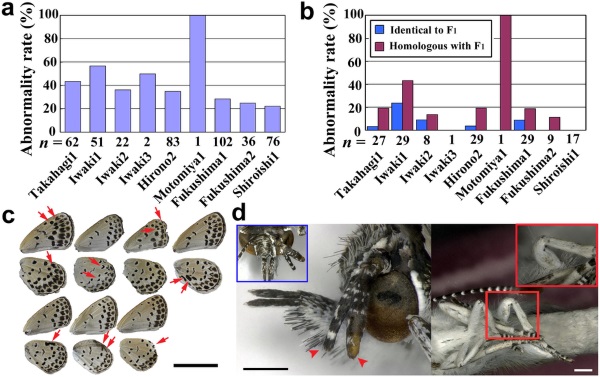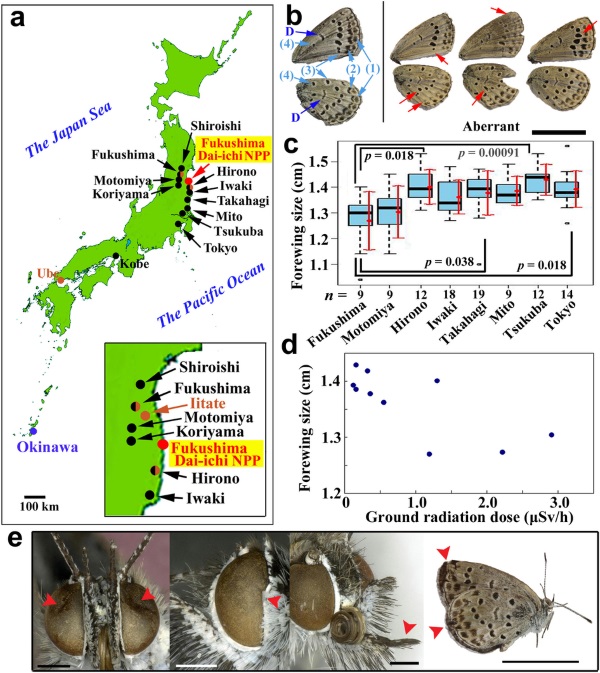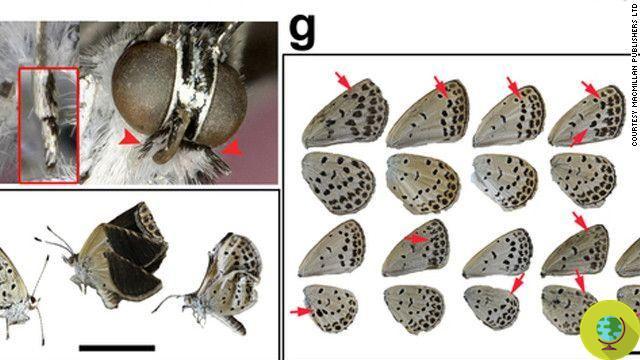Mutant butterflies, here is the new signal identified by scientists regarding the consequences on animals of the nuclear disaster in Fukushima. Experts have highlighted anomalies in the antennae, abdomen and legs of the butterflies, as well as in their eyes.
He is about to end up run over, his mother saves him
Mutant butterflies, here is the new signal identified by scientists regarding consequences on the animals of the nuclear disaster of Fukushima. Experts have highlighted anomalies in the antennae, abdomen and legs of the butterflies, as well as in their eyes.
The researchers found that some butterflies had broken or wrinkled wings, changes in the size of the wings as well as in their color and number of spots. The study in question bears the title of "The biological impacts of the Fukushima nuclear accident on the pale grass blue butterfly" and was published in the journal Nature.
The study began two months after the earthquake and tsunami that devastated northeastern Japan in 2011, triggering a nuclear catastrophe. The radiation from the Fukushima-Daiichi plant has not only forced the displacement of tens of thousands of people, but has also led to consequences on animals such as butterflies.
Experts found that 12% of the butterflies examined, from the Fukushima area, had abnormalities or mutations. In the progeny the mutation rate it rose to 18% and some butterflies died before reaching adulthood. The anomaly rate rose to 34% after mating between healthy butterflies and mutant butterflies.
Over time, and with the study of other surviving butterflies, the researchers highlighted a 52% offspring mutation rate. The butterflies studied later likely experienced radiation exposure as both larvae and adult butterflies.
The researchers concluded that radionuclides from the Fukushima nuclear power plant caused physiological and genetic damage to the species' butterflies. Pseudozizeeria maha, better known as Pale Grass Blue Butterfly.


"Our results are consistent with previous studies which have shown that butterfly populations are very sensitive to artificial radionuclide contamination in Chernobyl and Fukushima," the researchers agree. "The present study indicates that the Pale Grass Blue Butterfly is probably one of the best indicator species of radionuclide contamination in Japan."

Undoubtedly, the results of the study are appealing new concerns on the severe impact of the Fukushima disaster on the ecosystem in Japan and surrounding areas and remind us that we should act to avoid other nuclear disasters in the future. Finally, according to experts, such mutations should not affect humans, which are much more resistant than butterflies. But only further research can confirm this.
Marta Albè
Read also:
Fukushima: the tragedy of the animals left to die in the evacuated area (video) Fukushima: monkeys and wild boars sacrificed to map the levels of radioactivity near the nuclear power plant


























